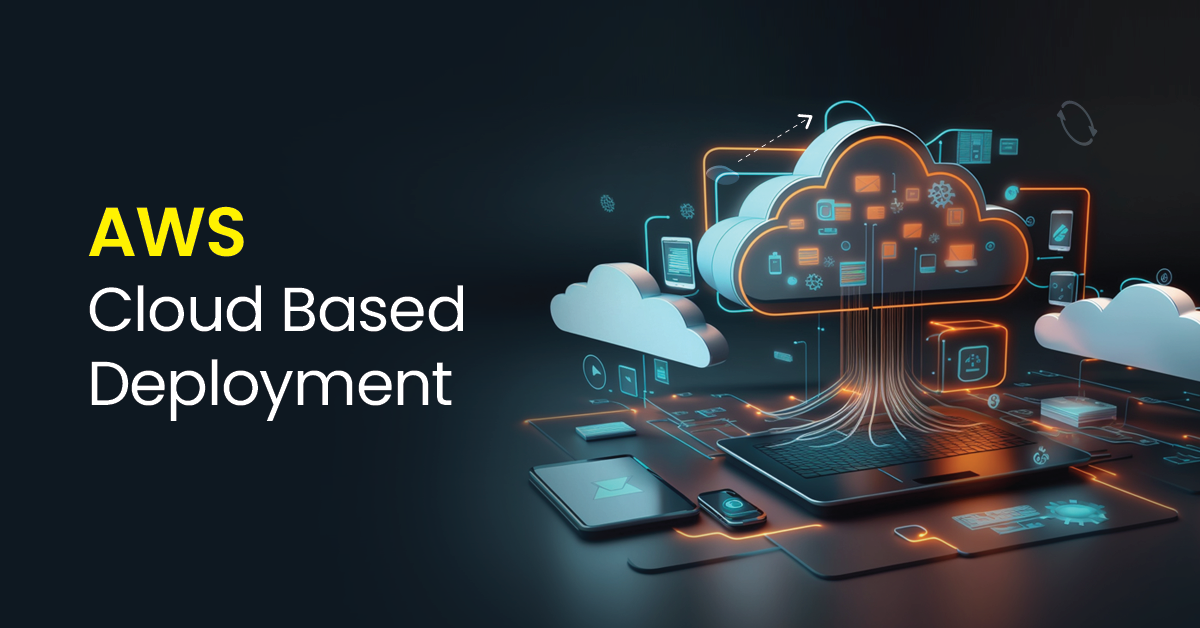In the dynamic evolution of IT infrastructure, organizations have moved from solely relying on on-premises data centers to embracing the transformative power of the cloud. While some have shifted entirely to public cloud platforms, many have found that a blended approach offers the optimal balance of control, flexibility, and scalability. This middle ground, which combines elements of both traditional private infrastructure and modern public cloud environments, is known as hybrid cloud computing. Hybrid cloud computing represents an IT architecture where an organization manages a combination of on-premises infrastructure (or a private cloud) and a public cloud (such as those offered by AWS, Azure, or Google Cloud), and these two environments are interconnected and orchestrated to function as a single, unified infrastructure. Understanding what is hybrid cloud and how it operates is crucial for businesses seeking to leverage the agility and cost-efficiency of the public cloud while retaining the security, control, and performance necessary for certain workloads or data. It offers a flexible strategy that allows organizations to place different applications and data in the environment that best suits their specific needs, balancing competing requirements. This comprehensive guide will delve into the specifics of hybrid cloud computing, defining its core components, explaining the essential connection between private and public environments, exploring the significant hybrid cloud benefits and potential hybrid cloud challenges, discussing common hybrid cloud use cases, and outlining key considerations for implementing and managing a robust hybrid cloud strategy.
Toc
Understanding Hybrid Cloud Computing: Bridging Private and Public Environments

At its core, hybrid cloud computing is about connection and integration. It’s not simply about using both private and public cloud resources in isolation; it’s about binding them together to create a more agile, scalable, and adaptable IT landscape. Understanding what is hybrid cloud begins with defining this blended model and identifying its constituent parts.
What Defines Hybrid Cloud Computing? A Blended IT Model
Hybrid cloud computing is an IT architecture that combines at least one private cloud environment with at least one public cloud environment. The key characteristic that defines a true hybrid cloud is the ability for data and applications to move seamlessly between these distinct environments. It’s a unified management approach across disparate infrastructures, rather than just operating separate, disconnected private and public clouds. The model allows organizations to extend their existing infrastructure into the cloud, or bring public cloud capabilities into their private environment, creating a single, flexible pool of resources.
In a hybrid cloud computing model, workloads and data can be placed in the environment that makes the most sense from a cost, performance, security, or compliance perspective. For example, sensitive data or critical legacy applications might reside in the private cloud, where the organization has maximum control, while variable workloads or less sensitive data might be hosted in the public cloud, leveraging its on-demand scalability and cost-effectiveness. The goal of hybrid cloud computing is to gain the agility and innovation benefits of the public cloud without having to abandon existing investments in on-premises infrastructure or compromise on specific requirements that are better met in a private environment. It’s a strategy that acknowledges the reality that most large organizations have existing data centers and diverse application portfolios, making a gradual, blended approach to cloud adoption often more practical than an all-or-nothing migration. Defining what is hybrid cloud is about understanding this integrated approach to leveraging different types of cloud infrastructure.
The Core Components: Private Cloud Meets Public Cloud

A hybrid cloud computing environment is built upon two fundamental components: the private cloud and the public cloud. Each component has distinct characteristics and roles within the overall hybrid architecture.
The Private Cloud refers to cloud infrastructure that is provisioned for exclusive use by a single organization. It can be owned, managed, and operated by the organization 1 itself (on-premises private cloud) or by a third party for the organization’s exclusive use (a dedicated managed private cloud). The private cloud typically provides high levels of control over the infrastructure, enhanced security options tailored to specific needs, and dedicated resources that are not shared with other organizations. It is often used for hosting mission-critical applications, sensitive data, or workloads subject to strict regulatory requirements where maximum control is paramount. While on-premises data centers can sometimes be the basis for a private cloud, a true private cloud offers cloud-like capabilities such as self-service provisioning, elasticity (within the confines of the dedicated infrastructure), and measured usage, delivered within the organization’s control boundary.
The Public Cloud, on the other hand, refers to cloud infrastructure that is owned and operated by a third-party cloud service provider (like AWS, Microsoft Azure, Google Cloud Platform). The public cloud provides computing resources (compute, storage, networking, applications) over the internet on a multi-tenant basis, meaning the underlying hardware infrastructure is shared among multiple users, though their data and applications are logically separated. Key characteristics of the public cloud include massive scalability, high elasticity, a pay-as-you-go pricing model based on consumption, and a vast array of readily available cloud services (IaaS, PaaS, SaaS, specialized services). The public cloud is often used for variable workloads, new application development, less sensitive data, and leveraging cutting-edge services that would be expensive or complex to build and manage in a private cloud.
Hybrid cloud computing brings these two distinct environments together, allowing organizations to strategically deploy workloads and data across both, leveraging the strengths of each component within a unified architecture. It’s the combination and interplay of the private cloud and the public cloud that defines the potential and complexity of hybrid cloud computing.
Why the Connection Matters: The Essence of a True Hybrid Cloud
What elevates simply using both a private cloud and a public cloud into a true hybrid cloud computing model is the seamless connection and orchestration between the environments. Without this robust interconnection, the two clouds remain isolated silos, limiting the ability to move workloads, share data, or manage resources centrally.
The connection in hybrid cloud computing involves:
- Network Connectivity: Establishing secure and reliable network links between the private cloud and the public cloud. This is often achieved using dedicated private connections (like AWS Direct Connect or Azure ExpressRoute) or secure VPN tunnels over the internet. High bandwidth and low latency are often critical for enabling certain hybrid cloud use cases.
- Data Integration: Implementing mechanisms to synchronize or exchange data between the private cloud and the public cloud. This allows applications running in one environment to access data stored in the other, supporting distributed workloads.
- Management and Orchestration: Utilizing tools and platforms that provide a unified view and management capabilities across both the private cloud and the public cloud. This enables administrators to provision, monitor, and manage resources and deploy applications consistently across the entire hybrid cloud computing environment.
- Workload Portability: Designing applications and utilizing technologies (like containers or abstraction layers) that allow workloads to be easily moved or distributed between the private cloud and the public cloud based on changing needs or conditions.
This robust connection and the ability to orchestrate resources across both environments are the essence of a true hybrid cloud computing architecture. It allows organizations to dynamically leverage the scale of the public cloud when needed for workloads that typically reside in the private cloud (e.g., cloud bursting), or to utilize public cloud services to enhance applications or data that remain primarily in the private cloud. Without this seamless bridge, the ability to fully realize the hybrid cloud benefits like flexibility and disaster recovery is limited. Understanding this critical connection is fundamental to grasping what is hybrid cloud and its operational capabilities.
1. https://sanduocpham.com.vn/mmoga-exploring-the-definition-of-cloud-computing-what-it-truly-means/
2. https://sanduocpham.com.vn/mmoga-understanding-the-imperative-data-security-in-cloud-computing/
4. https://sanduocpham.com.vn/mmoga-understanding-the-role-of-cloud-computing-providers/
5. https://sanduocpham.com.vn/mmoga-at-the-core-lets-define-cloud-computing/
The Strategic Value and Complexities of Hybrid Cloud Computing

The adoption of hybrid cloud computing is a strategic decision driven by the desire to achieve a balance between the distinct advantages offered by private and public cloud environments. However, this blended approach also introduces complexities that organizations must carefully manage.
Key Hybrid Cloud Benefits: Balancing Agility, Control, and Cost
The primary appeal of hybrid cloud computing lies in its ability to combine the strengths of both private cloud and public cloud environments, offering a compelling mix of hybrid cloud benefits that cater to diverse organizational needs.
One of the most significant hybrid cloud benefits is the balance it strikes between control and agility. The private cloud component offers the high level of control and security that organizations require for sensitive data and mission-critical applications, fulfilling strict compliance or performance needs. Simultaneously, the connection to the public cloud provides access to massive scalability, elasticity, and a wide array of innovative cloud services (like AI/ML, analytics) that can be rapidly provisioned, offering agility without having to build everything in-house.
Cost optimization is another key hybrid cloud benefit. While the private cloud requires significant upfront investment, the public cloud operates on a pay-as-go model. Hybrid cloud computing allows organizations to place variable or non-sensitive workloads in the cost-effective public cloud, reserving the more expensive private infrastructure for stable or highly sensitive tasks. This enables costs to be managed more dynamically and potentially reduced compared to an all-private strategy.
Furthermore, hybrid cloud computing offers enhanced flexibility and disaster recovery capabilities. Organizations can leverage the public cloud as a cost-effective location for backups and disaster recovery sites, replicating data and applications from the private cloud. The flexibility to move workloads between environments based on changing performance requirements, cost considerations, or availability needs provides a level of adaptability not found in single-cloud or purely on-premises models. These combined hybrid cloud benefits make the model a strategic choice for many enterprises navigating their cloud strategy.

Despite the significant hybrid cloud benefits, implementing and managing a hybrid cloud computing environment introduces complexities and hybrid cloud challenges that require careful planning and execution. Successfully overcoming these hurdles is key to realizing the full potential of the model.
One of the primary hybrid cloud challenges is the complexity of management. Organizations must manage two distinct infrastructure environments (private and public) with potentially different management tools, APIs, and processes. Ensuring consistent operations, monitoring, and automation across both requires specialized skills and tools (hybrid cloud management).
Integration headaches are also a common challenge. Making the private cloud and public cloud work together seamlessly – ensuring reliable network connectivity, synchronizing data, and enabling workloads to move easily – can be technically challenging and require significant effort in planning and implementation. Ensuring compatibility and interoperability between the different environments is crucial.
Hybrid cloud security presents a unique set of challenges. Maintaining a consistent security posture and applying uniform security policies across both the highly controlled private cloud and the shared public cloud environment is difficult. Securing the connection between the two clouds, managing identity and access across disparate systems, and ensuring cloud data protection regardless of where data resides are critical hybrid cloud security considerations. Data governance and compliance requirements must be met in both environments, potentially adding complexity (cloud compliance).
Other hybrid cloud challenges include potential cost management issues (tracking usage and spend across both environments), the risk of vendor lock-in (less severe than pure public cloud, but still a factor), and ensuring that internal IT teams have the necessary skills to manage and operate a complex hybrid cloud computing environment. Effectively addressing these hybrid cloud challenges requires a well-defined hybrid cloud strategy and investment in the right people, processes, and technologies.
Common Hybrid Cloud Use Cases: Where This Model Excels
Hybrid cloud computing is particularly well-suited for specific scenarios and hybrid cloud use cases where the blended approach offers distinct advantages over purely private or purely public cloud models. These use cases highlight the strategic value of the hybrid cloud.
- Cloud Bursting: One classic hybrid cloud use case is cloud bursting. This involves running most of a workload (like a web application) in the private cloud but temporarily “bursting” or scaling out to the public cloud to handle sudden spikes in demand or traffic. This allows organizations to maintain control over their core workload in the private cloud while leveraging the massive, on-demand scalability of the public cloud only when needed, optimizing costs.
- Disaster Recovery and Backup: Hybrid cloud computing is an excellent model for disaster recovery and backup. Organizations can maintain their primary applications and data in the private cloud while using the cost-effective public cloud for storing backups and hosting a secondary disaster recovery site. This allows for faster recovery in the event of an outage in the private cloud without the expense of maintaining a duplicate physical data center.
- Application Modernization: Organizations can use the hybrid cloud model to modernize their application portfolio gradually. They can keep legacy applications running in the private cloud while developing new microservices or components in the public cloud, leveraging modern cloud services and development tools. These new components can then connect back to the legacy systems in the private cloud, facilitating a phased approach to modernization.
- Development and Testing: The public cloud offers a highly agile and cost-effective environment for development and testing. Organizations can use the public cloud for these variable workloads, spinning up and tearing down environments quickly, while running production workloads in the private cloud. This hybrid cloud use case accelerates development cycles.
- Compliance and Data Residency: For workloads or data subject to strict regulatory or data residency requirements, the private cloud often provides the necessary control. However, organizations can still use the public cloud for less sensitive data or processes, creating a hybrid cloud that meets compliance needs while still leveraging public cloud benefits.
These common hybrid cloud use cases demonstrate the practical applications and strategic value of hybrid cloud computing for organizations with diverse IT requirements and existing infrastructure investments.
1. https://sanduocpham.com.vn/mmoga-the-foundation-of-modern-it-understanding-cloud-computing-aws/
2. https://sanduocpham.com.vn/mmoga-understanding-the-imperative-data-security-in-cloud-computing/
5. https://sanduocpham.com.vn/mmoga-exploring-the-definition-of-cloud-computing-what-it-truly-means/
Implementing and Managing Your Hybrid Cloud Computing Environment
Moving to or managing a hybrid cloud computing environment requires careful planning, robust security measures, effective management tools, and a clear strategy. Successfully implementing a hybrid cloud involves addressing both the technical integration and the operational aspects.
Developing a Hybrid Cloud Strategy: Planning Your Integration
Implementing hybrid cloud computing effectively begins with developing a well-defined hybrid cloud strategy. This strategy outlines the rationale for adopting a hybrid model and provides a roadmap for integrating and managing the private cloud and public cloud components.
Key elements of a hybrid cloud strategy include:
- Workload Assessment: Identifying which applications and data are suitable for the private cloud and which are better suited for the public cloud. This involves assessing factors like sensitivity, performance requirements, scalability needs, and compliance obligations. This assessment drives the placement decisions within your hybrid cloud computing architecture.
- Integration Planning: Designing the network connectivity, data synchronization methods, and management frameworks necessary to securely and effectively integrate the private cloud and public cloud environments.
- Security Planning: Developing a comprehensive hybrid cloud security framework that ensures consistent policies and controls across both environments, addressing identity, access, data protection, and threat management.
- Management and Governance: Defining processes and selecting tools for hybrid cloud management, monitoring, cost tracking, and governance across the entire hybrid cloud computing landscape. This includes establishing policies for resource provisioning and usage.
- Skill Development: Identifying and addressing the need for internal IT staff to develop skills in managing and operating resources in both private and public cloud environments.
A robust enterprise cloud strategy often incorporates hybrid cloud computing as a core component, recognizing the need to leverage diverse environments to meet complex business requirements. Planning the integration of existing infrastructure with new cloud services is a key part of this process.
Critical Considerations: Hybrid Cloud Security and Hybrid Cloud Management
Two of the most critical aspects of successfully implementing and operating hybrid cloud computing are ensuring strong hybrid cloud security and effective hybrid cloud management. These areas require specific attention due to the distributed nature of the environment.
Hybrid Cloud Security: Maintaining a consistent and robust security posture across disparate private cloud and public cloud environments is paramount. Hybrid cloud security considerations include:
- Consistent Security Policies: Implementing a framework that applies uniform security policies (e.g., access controls, encryption requirements, patching standards) across both clouds.
- Securing the Connection: Ensuring the network link between the private cloud and public cloud is secure (e.g., using encrypted VPNs or dedicated, private connections).
- Unified Identity and Access Management: Implementing a system that allows for consistent user authentication and authorization across both environments, preventing unauthorized access regardless of where resources reside.
- Data Security in Transit and at Rest: Ensuring data is encrypted when moving between clouds and when stored in either environment (cloud data protection).
- Monitoring and Logging: Implementing unified monitoring and logging solutions that provide visibility into security events across the entire hybrid cloud computing landscape.
Addressing these hybrid cloud security considerations is essential for protecting data and applications in a distributed environment.
Hybrid Cloud Management: Effectively managing resources, monitoring performance, automating tasks, and tracking costs across different clouds requires specialized tools and processes. Hybrid cloud management involves:
- Unified Management Platforms: Utilizing platforms or tools that provide a single pane of glass for managing resources in both the private cloud and public cloud.
- Orchestration and Automation: Implementing tools and workflows that automate the deployment, scaling, and management of applications and infrastructure across both environments.
- Performance Monitoring: Monitoring application performance and resource utilization across the hybrid cloud to identify bottlenecks and optimize resource placement.
- Cost Management: Tracking and managing costs across both the private cloud (operational costs) and the public cloud (pay-as-you-go consumption) to ensure budget adherence and identify cost optimization opportunities.
Effective hybrid cloud management is crucial for reducing operational complexity and maximizing the efficiency and agility benefits of hybrid cloud computing.
The Future of the Hybrid Cloud: Evolution in Cloud Infrastructure
The concept of hybrid cloud computing is not static; it continues to evolve alongside advancements in cloud infrastructure and technology. The future of the hybrid cloud promises greater integration, increased automation, and new deployment models.
The evolution is driven by technologies that simplify management and portability across environments. Containers and container orchestration platforms (like Kubernetes) are increasingly central to the hybrid cloud, allowing applications to be packaged and run consistently across any environment. Serverless technologies are also extending to the edge and on-premises environments, blurring the lines further. Cloud providers are offering more services designed specifically for hybrid cloud use cases, facilitating seamless data transfer, unified management, and consistent security policies across disparate locations. The rise of multi-cloud strategies (using multiple public clouds) is also intertwined with hybrid cloud, adding another layer of complexity and requiring robust management and orchestration platforms. The future of cloud infrastructure and cloud computing points towards increasingly intelligent, automated, and interconnected hybrid environments that offer even greater flexibility and efficiency to organizations navigating the digital landscape. The hybrid cloud is poised to remain a dominant architecture for enterprises for the foreseeable future.
In conclusion, hybrid cloud computing is an IT architecture that integrates private cloud and public cloud environments, allowing organizations to leverage the strengths of both for increased flexibility, scalability, and cost optimization. Understanding what is hybrid cloud involves recognizing its core components and the crucial role of secure, seamless connection and management between them. Key hybrid cloud benefits include balancing control and agility, cost optimization, and enhanced disaster recovery capabilities. However, hybrid cloud computing also presents hybrid cloud challenges related to complexity of management, integration hurdles, and maintaining consistent hybrid cloud security. Common hybrid cloud use cases include cloud bursting, disaster recovery, and application modernization. Implementing hybrid cloud computing requires a well-defined hybrid cloud strategy, careful planning for cloud migration (in a hybrid context), robust hybrid cloud security measures, and effective hybrid cloud management tools and processes. The future of the hybrid cloud lies in greater integration, automation, and new deployment models enabled by evolving cloud infrastructure and cloud computing technologies, positioning it as a key component of many organizations’ enterprise cloud strategy.














